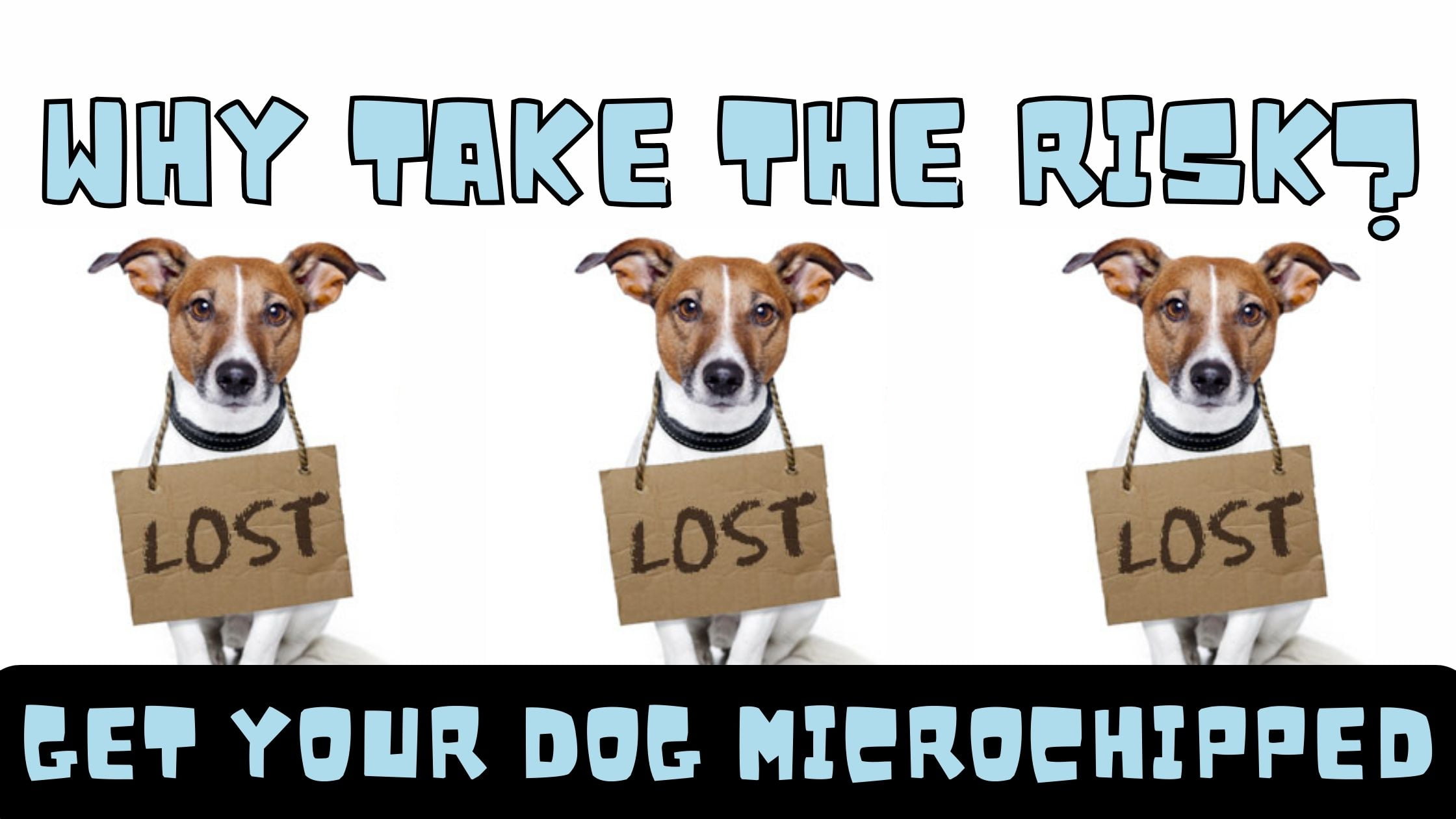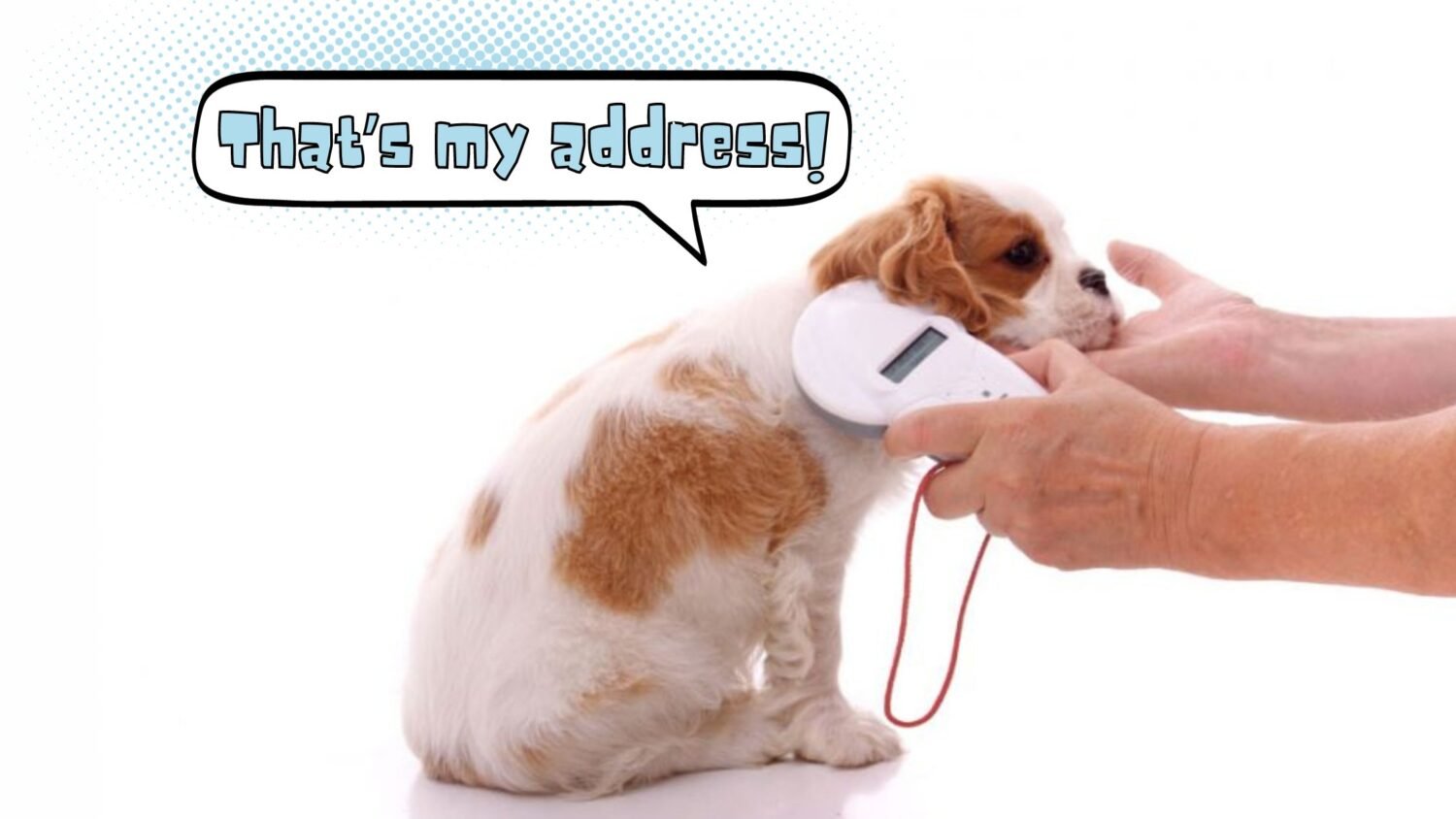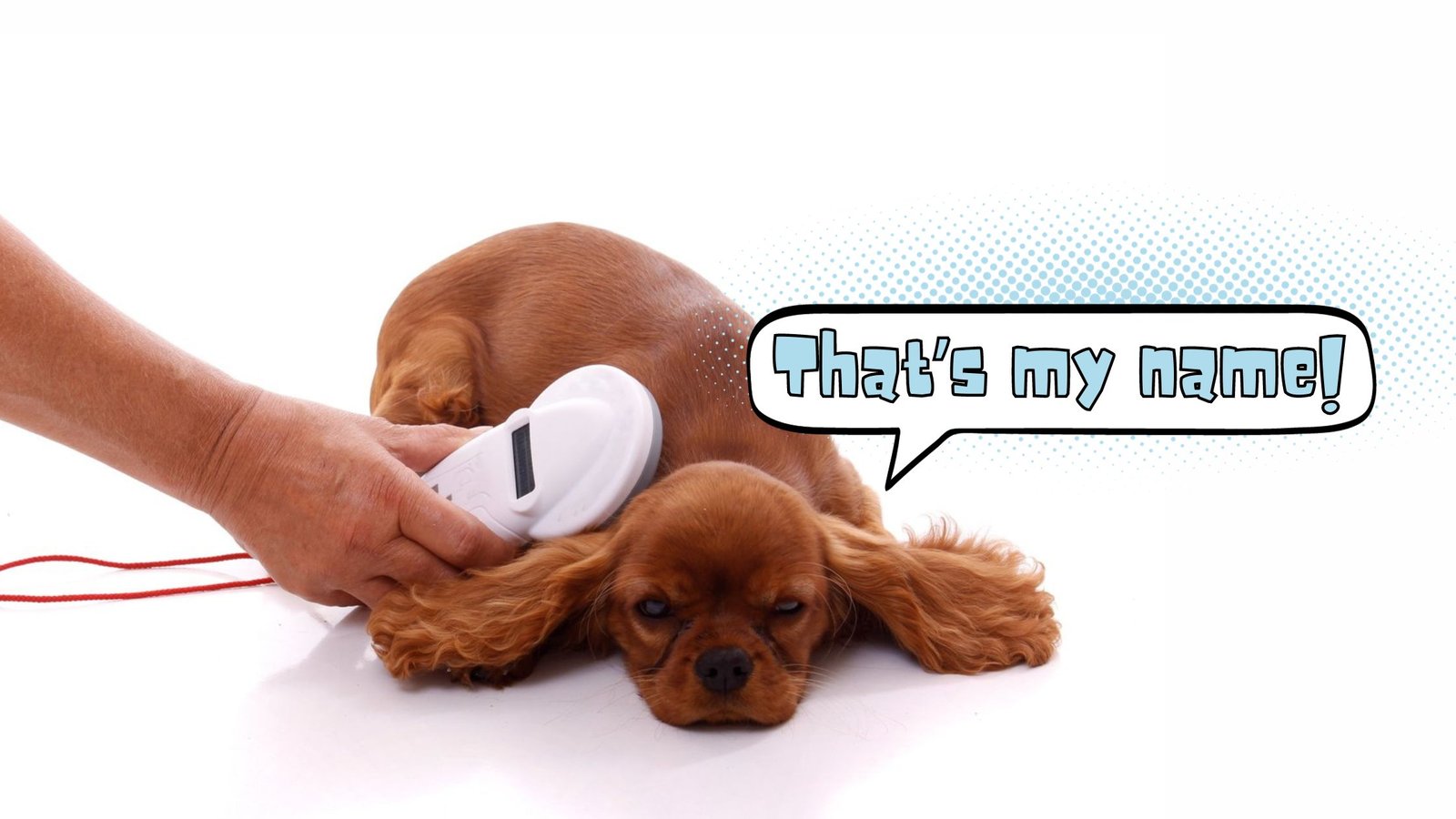
THE IMPORTANCE OF MICROCHIPPING YOUR DOG
Putting a microchip in your dog is a quick and easy task. It helps keep your dog safe. If your dog gets lost, it raises the chance of finding them again. In fact, in many places, it is now required by law to microchip all dogs. This article will explain why microchipping is important, how it is done, and the benefits for dogs and owners.
The Basics of Microchipping Dogs
A tiny chip, about the size of a grain of rice, is put under your dog’s skin. This chip has a special number that can be read by a scanner. The number ties to information like your contact details stored safely. Microchips cannot track your dog’s location, but they are a permanent way to identify them.
The microchipping process is simple. A vet will do it, similar to a routine vaccine. Most dogs handle it well with no major issues. The chip goes between the shoulder blades, taking just minutes. Once inserted, the chip can last your dog’s lifetime, giving reliable identification.
The Legal Requirement
In recognition of the importance of microchipping, many countries have made it a legal requirement to have all dogs microchipped. This legislation aims to ensure responsible pet ownership and increase the chances of reuniting lost or stolen dogs with their owners. By having your dog microchipped, you not only comply with the law but also contribute to the overall welfare and safety of your pet.
It is essential to check your local regulations regarding microchipping to ensure compliance. In some jurisdictions, failure to microchip your dog may result in fines or other penalties. By staying informed and fulfilling this legal obligation, you demonstrate your commitment to being a responsible dog owner.

THE BENEFITS OF MICROCHIPPING DOGS
Microchipping offers a range of benefits for both dogs and their owners.
Let’s explore some of the key advantages:
Increased Chances of Reuniting with Your Dog
The most significant benefit of microchipping is the increased likelihood of being reunited with your dog if they go missing. Collars and tags can be lost or removed, but a microchip provides a permanent form of identification that cannot be easily tampered with.
When a lost dog is found, animal shelters, veterinary clinics, or other authorized individuals can scan the microchip and retrieve the owner’s contact information from the database. This enables a swift and efficient process of reuniting the dog with their owner.
Deterrence of Dog Theft
Dogs can be stolen. Microchips stop thieves. With a microchip, thieves can’t sell the dog. They might get caught. So they avoid chipped dogs. Get your dog chipped to protect it.
Proof of Ownership
Chips prove you own the dog. The chip number links to your info. This shows the dog is yours. Helpful if someone argues over the dog. Or if it’s stolen and found.
Peace of Mind
Chips give peace of mind. If your dog gets lost or stolen, you can find it. Owners don’t worry as much. They enjoy time with their pet.
Healthy Dogs ID’s
Microchips keep dogs safe. They let you find lost dogs. Many places require chips now. Chipping dogs is responsible pet care.
Getting your dog microchipped is very important. It gives your furry friend a permanent way to be identified. And it helps bring lost dogs back home to their owners. By microchipping your dog, you take an active step to ensure their well-being. A microchip can truly make a big difference if your dog ever goes missing.

WHAT IS THE BEST AGE TO MICROCHIP A DOG?
Microchipping your dog is crucial for their safety and security. It provides a lasting way to identify them. And it greatly increases the chances of reuniting you with your dog if they ever get lost or stolen. Many dog owners wonder: at what age should I get my dog microchipped? Let’s look at the recommended age and the key benefits.
Why Microchipping Dogs Matters
First, let’s discuss why microchipping matters. Dogs can easily get separated from their owners in various ways. A gate could be left open. A leash could break. Or you could get distracted for a moment. In these situations, a microchip can help reunite you and your pup.
A microchip is a tiny electronic device, about the size of a grain of rice. It gets implanted under your dog’s skin. The microchip has a unique ID number that a special scanner can read. This number links to your contact details in a central database. So if your dog goes missing, the microchip helps identify you as the owner.
Unlike collars or tags that can fall off, a microchip provides permanent identification for your dog. It cannot be tampered with or removed, ensuring your dog’s ID stays intact for life.
The Recommended Age for Microchipping Dogs
The sooner you get your puppy microchipped, the sooner your dog is protected should it get loose or become lost. This is why many veterinarians recommend having your puppy microchipped at eight weeks of age.
At eight weeks, puppies are typically weaned from their mother and have received their first round of vaccinations. This makes it an ideal time to schedule a visit to the veterinarian for the microchipping procedure.
Microchipping at a young age also ensures that your dog’s identification is in place before it has the chance to wander off or get lost. It provides peace of mind knowing that your puppy is protected right from the start.
While eight weeks is the recommended age, it is important to note that dogs of any age can be microchipped. If you have adopted an older dog or missed the opportunity to microchip your puppy at eight weeks, it is never too late to do so. Speak to your veterinarian about the best time to microchip your dog.
The Microchipping Dogs Procedure
The microchipping procedure is relatively quick and simple. It is performed by a veterinarian or a trained professional.
First, the area where the microchip will be implanted is cleaned and sterilized. The microchip is then inserted under the skin, usually between the shoulder blades. The procedure is similar to a vaccination and does not require anesthesia.
Once the microchip is in place, it is important to register the chip with your contact information. This involves providing your name, address, phone number, and any other relevant details to the microchip database. This information will be linked to the unique identification number on the microchip.
Getting your dog microchipped is a smart choice. But it’s just one part of caring for your pet. Remember to keep your contact details up-to-date in the microchip database. That way, if your dog gets lost, you can be quickly reunited. Be sure to update your info if you move or change phone numbers.
Why Microchip Dogs?
Microchipping brings lots of good things for dogs:
- Lost dogs reunite with owners faster. Microchips help shelters, vets, and animal control find a dog’s owner easily. They use scanners to read the chip and get owner contact info.
- Permanent ID that can’t be lost. Unlike collars or tags that can fall off, a microchip stays with the dog for life. The unique number is tied to the owner’s contact details.
- Proof you own the dog. In ownership disputes or theft cases, the microchip number proves the dog belongs to you. The chip links to your info, providing legal evidence.
- Peace of mind for owners. Microchipping gives you confidence that you’ve taken an important step to keep your dog safe. It reduces stress over lost or stolen pets.
A Simple Thing That Helps A Lot
Microchipping dogs is a key part of responsible pet ownership. It permanently identifies dogs and greatly improves reuniting lost or stolen pets with owners. Vets recommend microchipping at 8 weeks, but any age works. Talk to your vet about the best time to get your dog microchipped.
Remember to keep your contact information up to date in the microchip database to ensure a swift reunion should your dog ever become lost. By taking this simple step, you are providing an added layer of protection for your beloved dog companion.

CAN I TRACK MY DOG WITH A MICROCHIP?
Microchipping has become a popular method of identification for pets, including dogs. It involves the implantation of a small microchip under the skin, typically between the shoulder blades. This tiny device contains a unique identification number that can be scanned by a veterinarian or animal shelter to retrieve the owner’s contact information.
However, it is important to note that a microchip does not serve as a tracking device to locate a missing dog. Contrary to popular belief, it cannot provide real-time information on the whereabouts of your pet. Instead, its primary function is to assist in reuniting you with your dog if they are found by someone else.
The Purpose of a Microchip
The main purpose of a microchip is to provide permanent identification for your dog. Collars and tags can easily be lost or removed, but a microchip remains in place throughout your pet’s life. If your dog gets lost or ends up in a shelter, a microchip can be scanned, and the unique identification number can be used to contact you and reunite you with your furry friend.
Microchips have proven to be highly effective in reuniting lost pets with their owners. According to a study published in the Journal of the American Veterinary Medical Association, dogs with microchips were returned to their owners 52.2% of the time, compared to only 21.9% for dogs without microchips.
How Microchips Work
A microchip is a small electronic device, about the size of a grain of rice, that is implanted under the skin of your dog. It does not have a power source or battery and remains dormant until it is scanned. When a microchip scanner is passed over the area where the chip is implanted, it emits a low-frequency radio wave that activates the chip.
Once activated, the microchip transmits its unique identification number to the scanner. The person scanning the chip can then use this number to search a database and retrieve the owner’s contact information. It is crucial to keep your contact details up to date in the microchip database to ensure that you can be reached if your dog is found.
Limitations of Microchips
While microchips are an invaluable tool in pet identification, it is essential to understand their limitations. One of the main limitations is that a microchip does not have GPS or tracking capabilities. It cannot provide real-time information on the location of your dog.
Microchips are also dependent on someone finding your lost dog and taking them to a facility equipped with a microchip scanner. If your dog is not found by someone who knows to scan for a microchip, the chip may go unnoticed, and you may not be reunited with your pet.
Additionally, it is important to note that not all microchips are compatible with all scanners. Different manufacturers use different frequencies for their microchips, and some scanners may not be able to read all types of chips. This can create challenges if your dog is found by an organization with a scanner that is not compatible with your pet’s microchip.
Enhancing Pet Safety
While a microchip cannot track your dog’s location, there are other technologies available that can help keep your pet safe and provide real-time tracking capabilities. GPS-enabled collars and wearable devices have become increasingly popular among pet owners.
GPS collars use satellite technology to track the location of your dog in real-time. These collars typically require a subscription service and a smartphone app to access the tracking information. They can be useful for monitoring your dog’s whereabouts and setting up virtual boundaries to receive alerts if your pet strays beyond a designated area.
Wearable devices, such as smart tags or smart collars, can also provide additional safety features. These devices often include features like activity monitoring, temperature alerts, and even health tracking capabilities. While they may not have GPS tracking, they offer a range of functionalities to keep your pet safe and healthy.

TIPS FOR PREVENTING YOUR DOG FROM GOING MISSING
While microchips and tracking devices can be useful tools, it is always best to prevent your dog from going missing in the first place.
Here are some tips to help keep your furry friend safe:
- Ensure your dog is properly trained and responds to basic commands.
- Keep your dog on a leash or in a securely fenced area when outside.
- Regularly check that your fence is secure and free from any potential escape routes.
- Use a strong collar with tags showing your current contact info.
- Think about using a harness instead of a collar, especially for dogs that can slip out of collars.
- Keep your dog’s microchip details updated in the database.
- Consider extra safety like GPS collars or wearable devices.
- Get your dog spayed or neutered to reduce wandering for mates.
- Be careful when opening doors or gates to prevent escapes.
- If you move or change contacts, update microchip database and tags.
Following these tips and taking precautions can greatly reduce your dog going missing and increase chances of reunion if they do.
A Quick Summary on microchipping dogs
A microchip is vital for pet ID but can’t track location, only provide ID if found by someone. For real-time tracking, consider GPS collars or wearable devices. Remember preventive measures like proper training, secure fencing, and updated ID tags. Combining strategies ensures your furry friend’s well-being and security.
Sometimes dogs run away from home. If your dog escapes, check our article about it. That article gives tips to stop dogs from running away. Some of our readers had this problem before. Most of them said to get a GPS Collar with a health app. The collar lets you follow your dog from your phone or computer!
GPS Collar for your dog with a health monitoring application!



